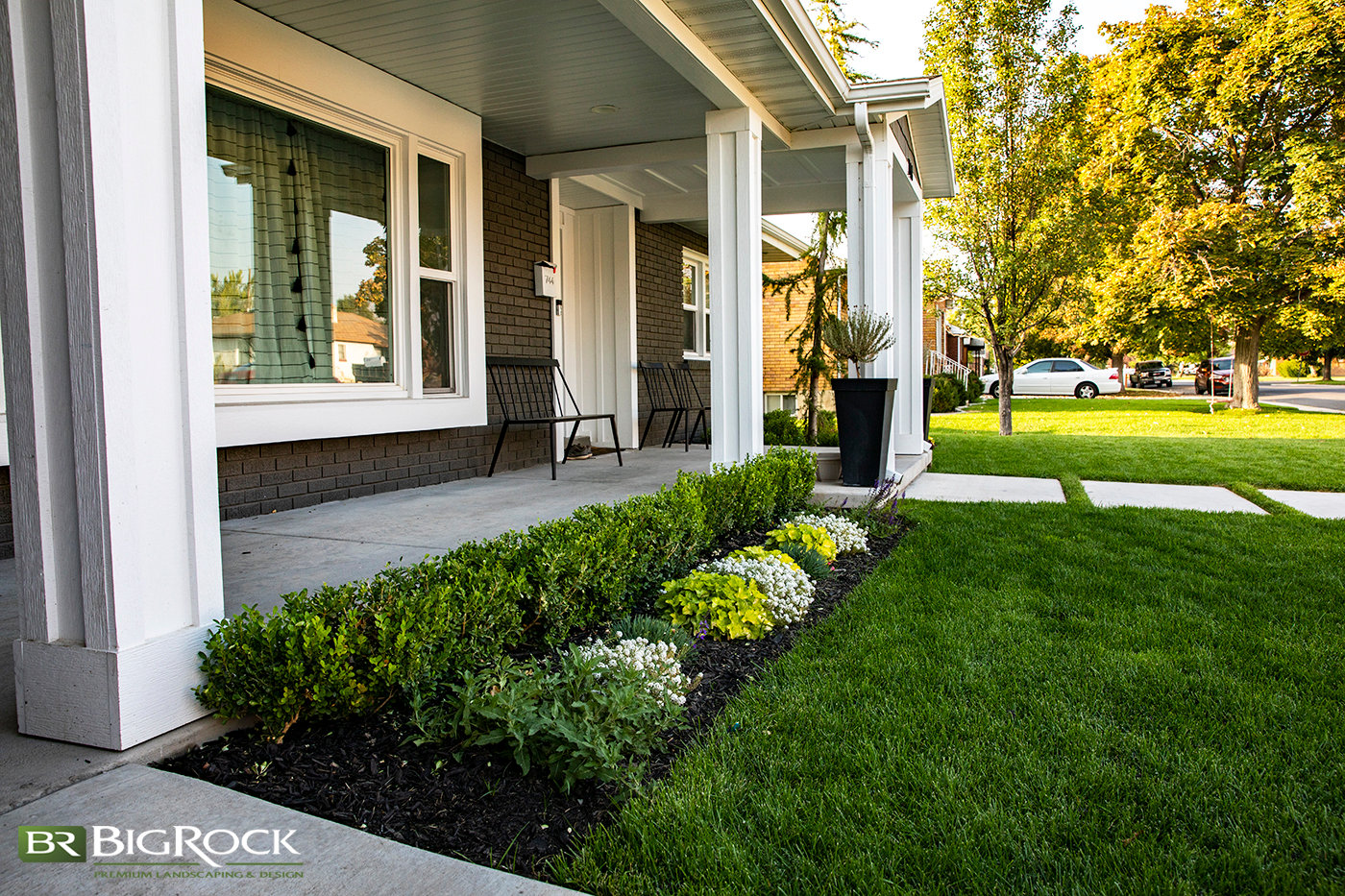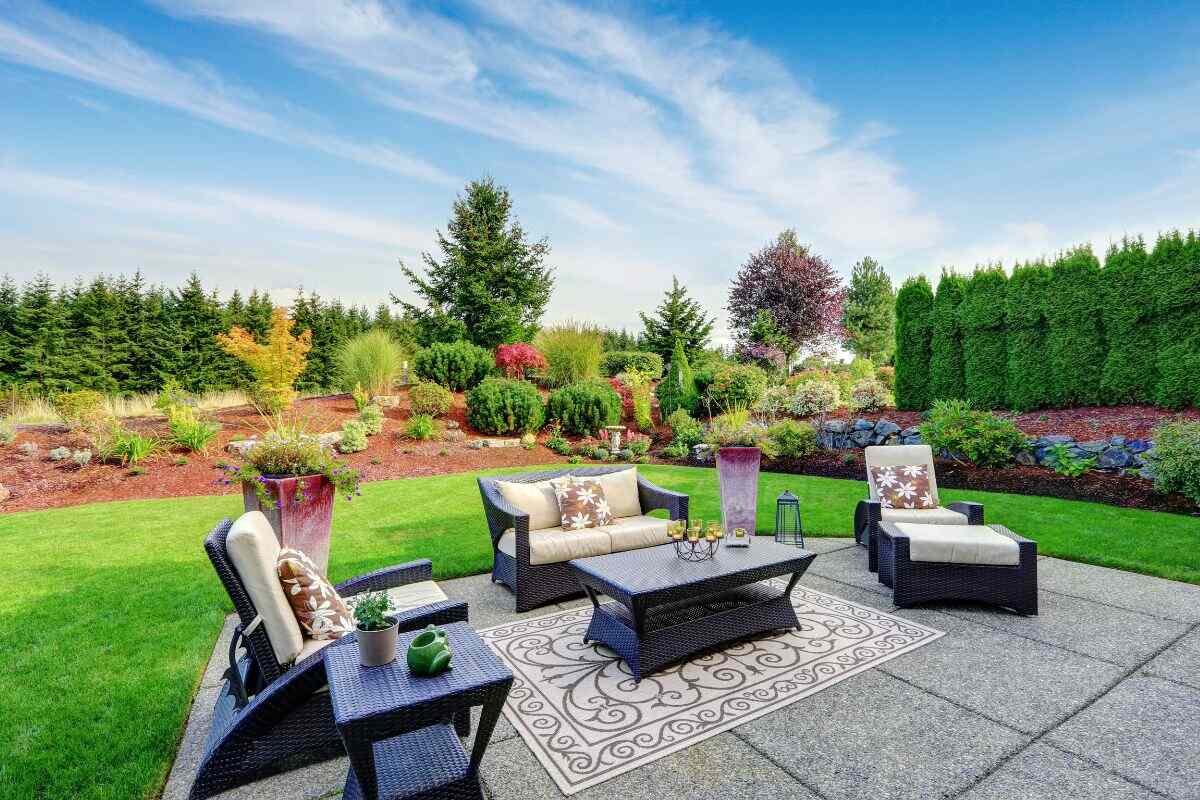Change Your Yard With Innovative Landscape Design Concepts and Strategies
Changing a garden needs thoughtful consideration of its one-of-a-kind features. Reliable landscape Design can boost both performance and aesthetic appeal. By discovering different techniques, one can create a room that not only shows personal style yet also supports regional biodiversity. As the trip unfolds, questions concerning plant sustainability, layout, and selection develop, triggering a deeper expedition into how to make these concepts revive.
Examining Your Outdoor Room: Understanding Your Garden's Prospective
Reviewing exterior room is crucial for efficient landscape design. Recognizing the special attributes of a yard allows designers to optimize its capacity. Variables such as soil quality, sunlight direct exposure, and existing structures play an essential role in establishing what can be attained. Evaluating the topography assists identify areas for growing, paths, or water attributes, while noting drain patterns ensures that plants thrive without waterlogging.
Furthermore, identifying the yard's microclimates can affect plant choice and placement. Observing exactly how the space is made use of by locals informs practical Design options, such as seating locations or play zones. In addition, taking into consideration the surrounding setting and neighboring landscapes can supply inspiration and context for Design choices. By thoroughly analyzing these components, one can produce a natural and welcoming outside area that mirrors the proprietor's vision while integrating with nature. Eventually, an extensive examination prepares for an effective landscape Design job.
Choosing the Right Plant Kingdoms: An Overview to Shade, Structure, and Seasonal Rate of interest
When selecting plants for a landscape design, recognizing the interplay of color, appearance, and seasonal passion is essential for creating a vibrant and dynamic yard. Shade can evoke feelings and set the tone for the space; as a result, picking an unified palette improves visual appeal. Cozy tones like reds and oranges produce energy, while cooler tones like blues and greens use tranquility.
Texture includes depth and measurement, permitting a mix of foliage sizes and shapes. Incorporating fine-textured plants with bold-leaved varieties produces contrast and intrigue.
Seasonal interest is important for maintaining year-round charm. Picking a selection of plants that grow in different periods warranties that the yard stays dynamic, changing from springtime's vivid blossoms to autumn's rich foliage. By thoughtfully thinking about these components, one can curate a landscape that is not just cosmetically pleasing yet engaging and likewise diverse throughout the year.

Developing Useful Areas: Designing Spaces for Relaxation and Entertainment
Developing functional zones in a landscape Design enhances the usability of exterior spaces, allowing home owners to flawlessly blend relaxation and home entertainment. By attentively splitting areas into unique zones, people can satisfy various activities, from peaceful resorts to dynamic celebrations. A well-designed area may integrate a comfy reading nook nestled among rich plant, supplying a relaxing escape (Landscaping Contractor). On the other hand, a vibrant outdoor dining location can serve as the perfect setup for celebrations with family members and buddies
Tactically put paths can lead guests between these areas, making certain very easy navigating. Additionally, incorporating elements like seating locations, fire pits, or water attributes can enhance the total atmosphere and performance. The assimilation of different appearances and shades in each area can produce visual interest while keeping a cohesive visual. Inevitably, making useful zones allows home owners to optimize their outdoor experience, transforming their gardens into versatile areas that fulfill varied lifestyle needs.
Incorporating Hardscape Elements: Patios, Walkways, and Focal Things
Incorporating hardscape components into landscape Design matches useful areas by supplying framework and visual allure. Patios act as important outdoor space, enabling house owners to take pleasure in meals and events in a specified area while boosting availability. The selection of products, such as all-natural stone or concrete, can significantly influence the total aesthetic, mixing effortlessly with the surrounding atmosphere.
Sidewalks facilitate movement via the yard, leading visitors while adding depth and passion. These courses can be crafted from various materials, consisting of crushed rock, pavers, or brick, each contributing to the garden's character.
Focal points, such as ornamental boulders, sculptures, or water attributes, draw the eye and produce a feeling of function within the landscape. Strategically positioned, these components can transform a common yard into an intriguing room, welcoming exploration and interaction. Through thoughtful combination of hardscape, a landscape comes to be not only useful but also aesthetically sensational.
Enhancing Privacy and Security: Natural Obstacles and Structures
To enhance personal privacy and protection in landscape layout, making use of natural obstacles such as dense bushes can effectively secure a property from unwanted sights. In addition, mounting privacy fences gives a solid structure that adds to a sense of safety and security and seclusion. Together, these components develop a more intimate outdoor space while deterring prospective invasions.
Growing Thick Hedges
While numerous property owners seek visual allure browse this site in their landscapes, growing thick bushes offers a double function of improving privacy and protection. These natural obstacles develop a visual shield, efficiently blocking the view from prying eyes and discouraging possible trespassers. Different species, such as boxwood, holly, or privet, can be chosen for their development patterns and vegetation thickness, ensuring lush insurance coverage throughout the year. Additionally, properly maintained bushes can contribute to a peaceful environment, absorbing noise and supplying a habitat for wildlife. The critical placement of these bushes can specify building limits and produce private exterior rooms, allowing house owners to appreciate their gardens with a feeling of safety. Ultimately, thick bushes are an efficient remedy for blending beauty with capability.
Mounting Privacy Fences
Privacy fences work as an additional efficient technique for enhancing personal privacy and security in residential landscapes. These frameworks not only delineate building boundaries but additionally create a sense of seclusion, securing homeowners from spying eyes. Various products, such as wood, steel, and vinyl, offer distinctive aesthetic appeals and levels of longevity, permitting house owners to select based on their Design choices and maintenance demands.

Lasting Landscaping: Eco-Friendly Practices for a Greener Garden
Sustainable landscaping highlights the significance of native plant option and water preservation methods. By choosing plants that are well-adapted to the neighborhood atmosphere, gardeners can minimize maintenance and resource use. Carrying out efficient sprinkling approaches further enhances the yard's ecological benefits, advertising a healthier ecosystem.
Native Plant Choice
Indigenous plant choice plays a vital role in sustainable landscape design, promoting biodiversity and lowering the requirement for chemical inputs. By choosing plants native to a details region, gardeners can produce environments that sustain neighborhood wildlife, such as pollinators, birds, and helpful insects. Home Page These plants are adjusted to the local environment and dirt conditions, calling for less water and maintenance compared to non-native varieties. Additionally, native plants can help regulate disintegration and improve soil health, promoting a well balanced community. Including indigenous varieties right into landscape makes not just improves the visual charm of the garden but additionally adds to ecological strength. Eventually, native plant selection is an important technique for those looking for to cultivate a lasting and vibrant garden.
Water Preservation Techniques
Integrating native plants can greatly boost water conservation initiatives in landscaping. These plants are well-adapted to regional environments, needing much less water and upkeep than non-native ranges. Applying drip irrigation systems enables targeted watering, reducing evaporation and drainage. Rain gathering systems can additionally be mounted, collecting and keeping rainwater for garden usage. Mulching aids preserve soil moisture, decreasing the regularity of watering. Grouping plants with comparable water requires with each other creates effective watering zones, better preserving water. In addition, utilizing absorptive products for pathways enables rainwater to leak into the ground, renewing groundwater products. By employing these water conservation strategies, garden enthusiasts can develop sustainable landscapes that flourish while minimizing ecological effect (Landscaping Design San Diego). Such methods add to a greener garden and a healthier community
Customizing Your Layout: Including Special Features and Individual Touches
Just how can one change a yard right into a personal haven? Customizing a landscape Design involves integrating special features that mirror individual tastes and way of lives. One approach is to integrate tailored yard art, such as sculptures or handmade birdhouses, which can act as focal factors and discussion beginners. Additionally, personalizing plant choices based upon personal choices or seasonal blossoms can produce a lively and advancing area.
Creating functional locations, such as a cozy reading nook useful content or an outside dining area, can boost usability and comfort. Including elements like a fire pit or a water attribute can introduce a welcoming setting.
Color materials, schemes, and textures ought to align with the home owner's style, whether it be contemporary, rustic, or eclectic. Ultimately, the objective is to develop a room that resonates with the individual's identity, making the yard not simply an aesthetic delight however a true expansion of the property owner's character.
Frequently Asked Questions
Just how Do I Allocate a Landscape Design Job?
To allocate a landscape Design project, one ought to assess project extent, research study prices for materials and labor, prioritize attributes, and allot an added 10-20% for unanticipated costs, ensuring a practical economic plan.
What Devices Are Essential for Home Yard Landscape Design?
Important devices for home yard landscape design include a shovel, rake, garden fork, pruning shears, wheelbarrow, hoe, and trowel. These tools aid in dirt prep work, growing, upkeep, and reliable transportation of products throughout the landscaping job.
Just How Can I Maintain My Yard After Upgrading?
To keep an upgraded yard, routine watering, mulching, weeding, and pruning are important (Landscaping Design San Diego). Surveillance plant wellness, readjusting dirt nutrients, and seasonal plant care contribute to a growing setting that showcases the garden's new Design successfully
When Is the Ideal Time to Beginning Landscaping?

Can I DIY My Landscape Design or Should I Employ a Professional?
Individuals can certainly DIY their landscape Design if they possess creative thinking and basic skills; nevertheless, hiring a professional commonly guarantees a more cohesive and expert outcome, particularly for complex jobs or details Design desires.
Acknowledging the yard's microclimates can affect plant choice and positioning. When picking plants for a landscape layout, comprehending the interplay of shade, texture, and seasonal rate of interest is necessary for producing a vibrant and vibrant yard. Choosing a range of plants that flower in different seasons guarantees that the garden remains lively, shifting from springtime's dynamic blossoms to fall's abundant vegetation. Including native species right into landscape creates not only boosts the aesthetic allure of the garden but likewise adds to ecological resilience. Necessary devices for home garden landscape design consist of a shovel, rake, garden fork, trimming shears, hoe, trowel, and wheelbarrow.